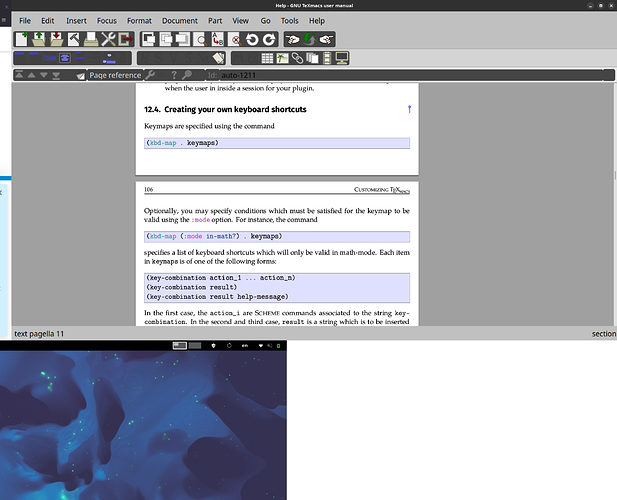Hey, I have been trying to find this information on my own, but I did not succeed.
I want to do multiple things:
- Add a review command in Texmacs, which I can later modify to either display everything that was tagged as “review” in red or not display those places.
- Have a shortcut to trigger the review command.
For now I tried adding a shortcut to display things in red via
(kbd-map . ("C-r" (make-with "color" "red")))
in my my-init-texmacs.scm, which unfortunately does not work.
Also, on a different note, is there any document which maybe walks you through simple modifications as above, which are probably relatively common? Unfortunately, the online documentation seems to be broken and has dead links (for example “master the keyboard”). Opening the full documentation inside texmacs takes a while and crashed the editor once for me, but also only told me
which did not help me.

